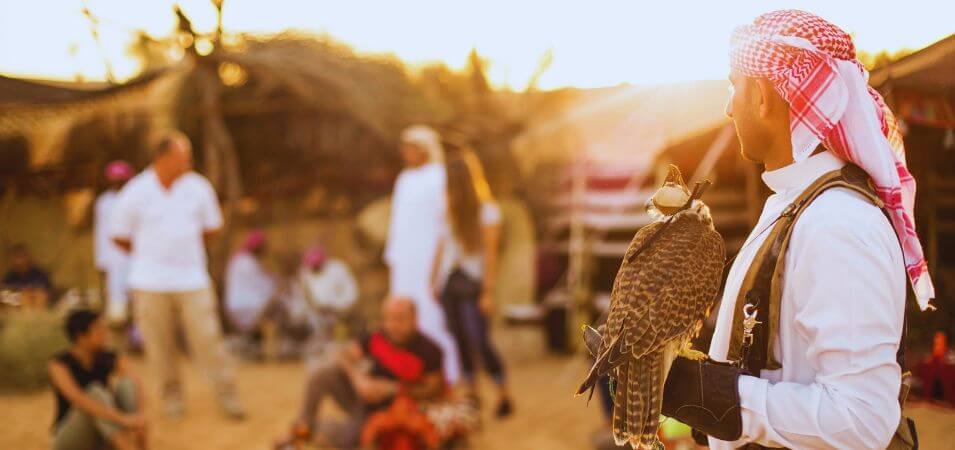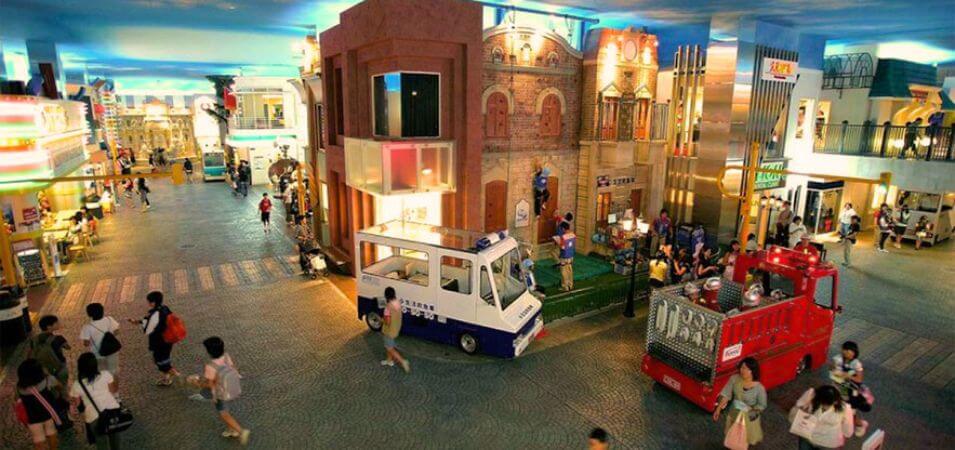Dubai Cultural Attractions
Dubai Cultural Attractions: 10 Ways to Experience the City’s Heritage Beyond the Malls
Dubai cultural attractions are places that most people associate with things such as innovative architecture and the availability of numerous malls and high-class hotels. However, Desna provides facts and information that the readers cannot find on this travel hub.
Think about how Dubai started to develop in the late 19th – early 20th centuries; what made ancient Bedouin women sustain a harsh desert environment, and which great-grandparents of Emiratis’ famed culture have influenced them so significantly that, to this date, you can see numerous architectural dhow houses, mosques, and ports scattered everywhere.
Take a break from monotony and venture to the mystical Dubai. Let’s unveil the true Dubai, the one where the wind towers speak stories of yesteryears, the old souks are still filled with the scent of fresh spices, and the culture lives on in daily life and amazing museums.
Bringing out the heritage in you could never be this fun! Dress up and take a trip back in time with background views of the old sectors, or an island trip skims through the traditional abra boat over the Dubai Creek; taste home-made food and visit indoor spaces with artifacts displaying the evolution of Dubai elements and aspects, etc.
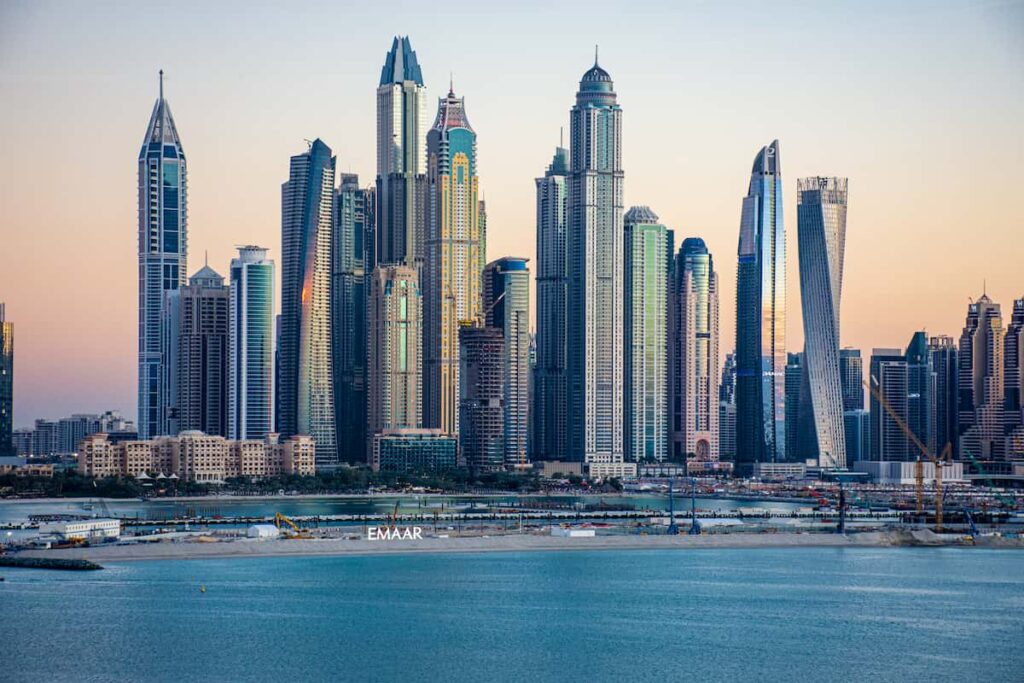
2. 🏘️ Walk Through Time: Dubai’s Historic Neighborhoods
-
Al Fahidi Historical District (Al Bastakiya)
Located at the true heart of old Dubai, surrounded by Dubai Museum, the Courtyard, and Dubai Old Souk, lies the Al Fahidi Historical District, also colloquially known as Al Bastakiya. The area is one of the very rare surviving neighborhoods of the past and has remained into the present day from the late 19th century.
The area is famous for its narrow, intertwined walkways along the brown buildings equipped with wind towers (barajeel), which were meant for ventilation before the invention of modern cooling systems. On the edges of the ‘bricking conglomerate‘, every small alley speaks a story of a small Dubai cultural attractions history long before skyscrapers were erected and oil wealth emerged.
Many of the courtyard houses that are brought back to life have more doorways than one may think, as they today host small art galleries, museums, as well as again welcoming small heritage cafes. With such an offering, a person will have the opportunity to taste the Arabic coffee, appreciate some characteristic local art, or just get carried away by the ambiance. The quarter is also the location of the Sheikh Mohammed Centre for Cultural Understanding, known for the fusion of the two very distinct cultures through the format of culinary lessons and conversations with the locals.
The old historic neighborhood of Al Fahidi is one of the most authentic cultural experiences one can find in the New Dubai, whether they are an admirer of history, a professional photographer, or a casual tourist.
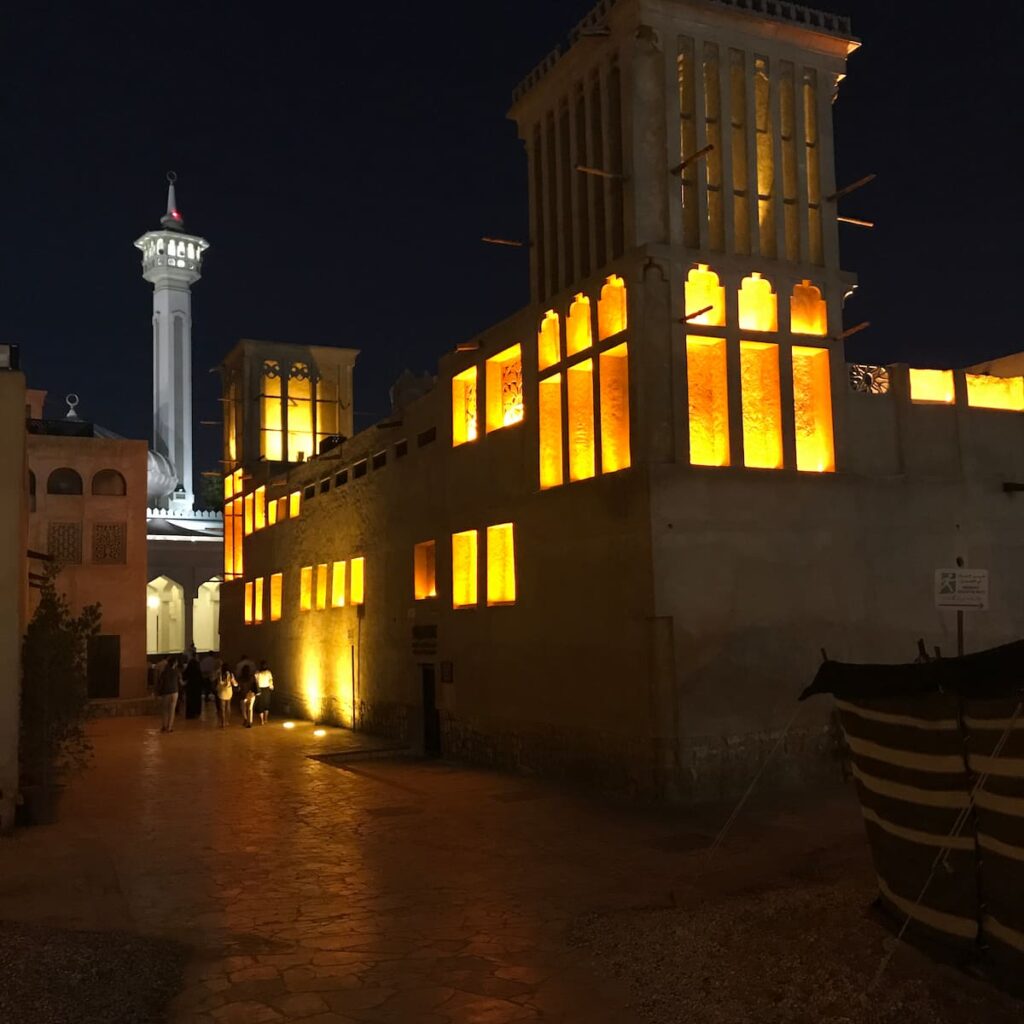
-
Al Seef & Dubai Creek
Long before the era of tall buildings and skyscrapers, Dubai Creek was the most important source of life, the main nerve of the city. It was from this place that the growth of Dubai as a trading center took off. Currently, it is operational and remains an exquisite component of the city’s cultural heritage. It is an accurate mix of the old and the new that can be read palpably in the streets along the lively promenade of Al Seef.
On one side, the traditional wooden dhows which had been plying the creek for years, transporting spices and textiles for the Indian traders, which residents and visitors rather failed to see, as all the cargo can be relegated to the baggage compartment below the deck of the ship. Be sure to take pleasure in the pace it picks up during the cruise, or use the quicker transportation method, which is the abra ride on the water.
A Living Museum on the Water’s Edge
On the other hand, sporadically, there are the buildings of the promenade districts like the one called Al Seef, as their structures can be built with mud-brick facades, and the buildings can be connected by walls that are lit by the provided lamps. And as is the case with classic buildings, people enjoy how the contemporary hotels and restaurant establishments coexist with the age-old open-air history museums and marketplaces. This duality allows for narration; more precisely, it could be called a museum hotel or a hotel museum, which combines history and physical perception.
And in the evening, it is the right place to have a walk while the sun sets, buy some locally crafted items, or even sit in a restaurant on the waterfront as history culminates in the historical changes exhibiting themselves in the flow of the creek. If you’re after history, pictures, or the perfect travel emporium, Al Seef and Dubai Creek are the ideal locations for soaking in the heritage of Dubai cultural attractions, and its surroundings.
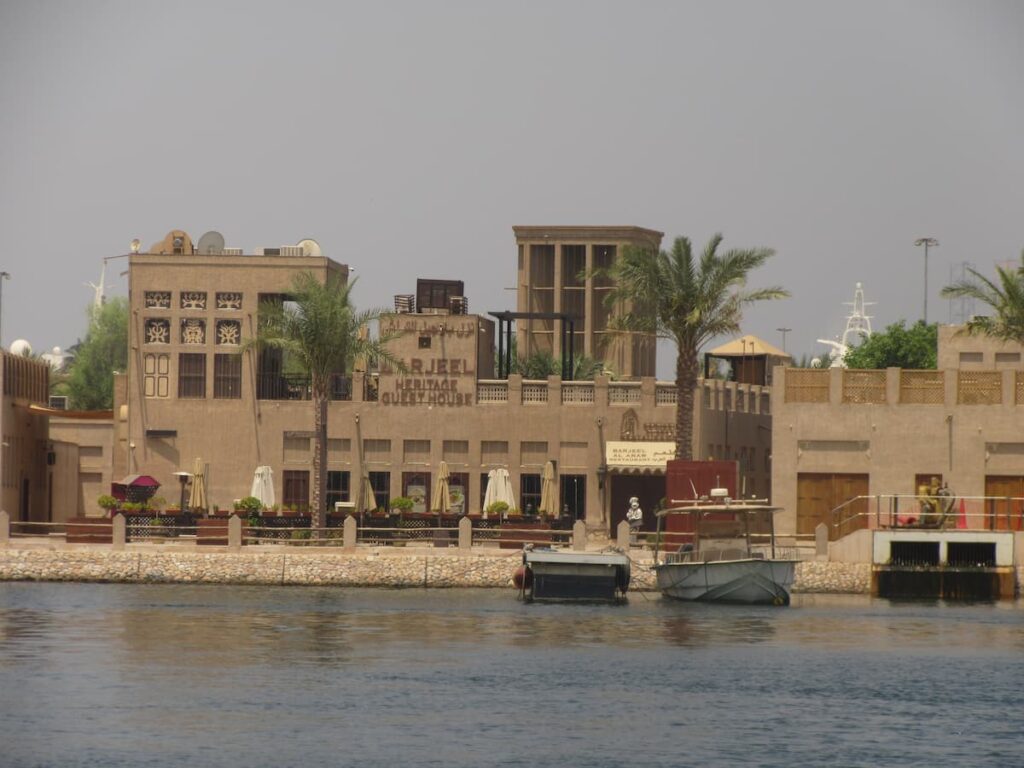
3. 🏺 Dubai Museums That Bring History to Life
-
Etihad Museum
For history buffs interested in knowing how the United Arab Emirates came into existence, the Etihad Museum becomes an essential point of interest. The museum is situated in Jumeirah and can be easily spotted as it is very close to the historic Union House, and is constructed with modern things, with such outstanding artistic designs that capture the basics regarding the documentation of the unity process in 1971.
The plot, covered with several specially designed illustrations, engrosses the very stages and activities when a newborn state was being difficultly born in the way everyone from architects of the idea to ordinary residents wanted to play a role. Visitors will be able to see some of the personal belongings of the founding fathers, historical records, and finally get to the very room in which the constitution of the UAE was signed.
The structure is in the shape of a ribbon, which even communicates this symmetry digitally as well. The shape is not simply architectural; it also engender laughter and fa eeling of pride in the history of the people of the U.A.E. Whether history buff, Middle East studies major or simple a tourist interested in the roots of modern Dubai, the museum will offer visitors the most panoramic and emotional understanding of the process of establishment of the UAE.
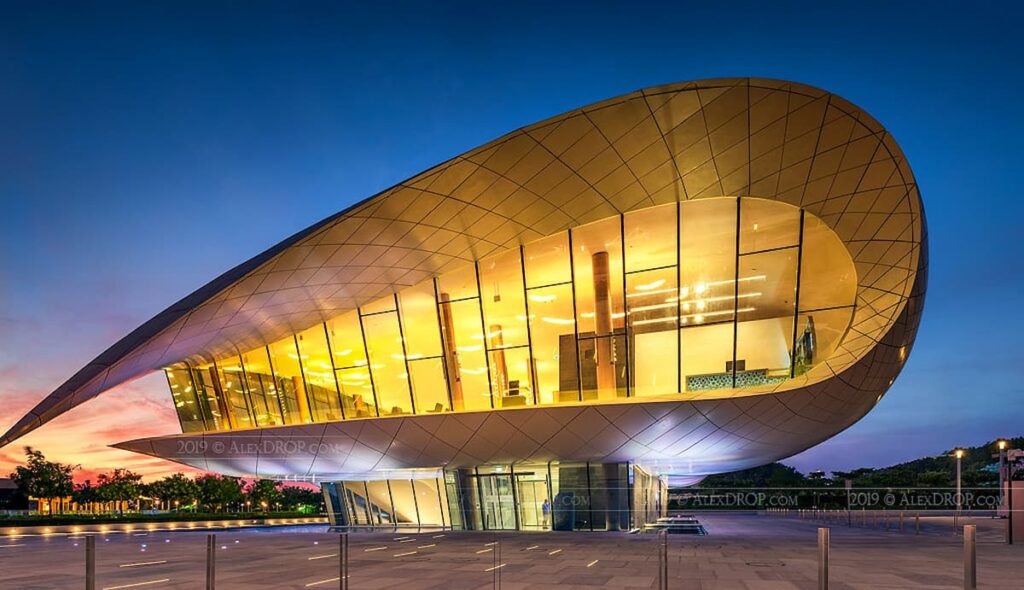
-
Dubai Museum (Al Fahidi Fort)
The Dubai Museum is situated inside the 18th-century Al Fahidi Fort in the midst of Old Dubai. The museum will take you back in time to see life in Dubai before the appearance of tall buildings and fast cars. The fort, which was made in the year 1787, is the most ancient structure that was constructed in Dubai cultural attractions and has at one time worked as a fortification, a living room, and even a correctional facility.
Upon entering, the journey back in time commences where Dubai was a quiet fishing village and a local trade center. The museum theme is the Bedouin culture, the pearls, the desert, travel survival kits, and the markets, which used to be the main markets of the city.
There are life-like scenes, relics of the past, and various interactive installations, such that visitors uncover the elegance and fortitude that formed the Dubai people before the era of oil. It is more than just looking from one era to another — this is an all-embracing period expedition, so that the very foundation of Emirati culture is revivified.
Narrators ideal for family, students, and people with cultural interests belong to the Dubai Museum, a place that helps to understand without any doubts their accomplishments and how far its past is embedded in the city.
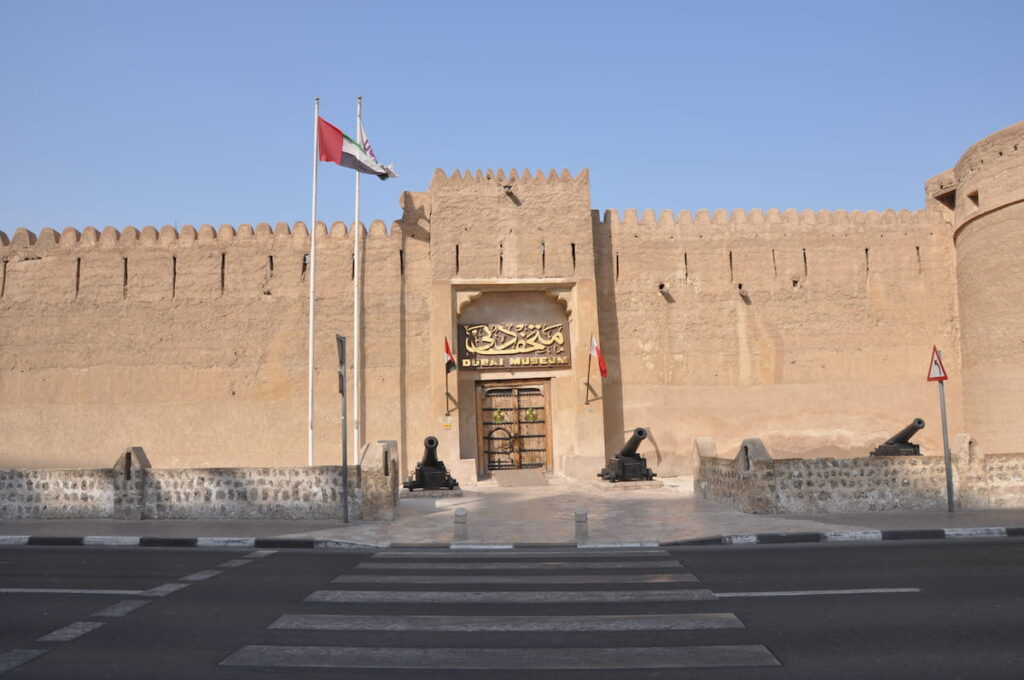
-
House of Sheikh Saeed Al Maktoum: Royal Life in Old Dubai
Positioned atop a hill in the Al Shindagha neighborhood, the Sheikh Saeed Al Maktoum residence is a structure devoted to the long-lasting history of the city during the first half of the 20th century. Set up in 1896 and mainly consisting of wood, in this case all palm woods, the home belonged to Sheikh Saeed Al Maktoum, the grandfather of the current ruler and was his work place and living abode for many years.
The house of Sheikh Saeed Al Maktoum district, located on the banks of Dubai Creek, the old town, was also very charming and picturesque having as you climbed up onto the walls. Hatch of Dubai During the 1840s onward, which helped in reconnecting and strengthening the trade between East and West.
While in the same area, take time to explore a few of Dubai’s niche cultural museums:
-
☕ The Coffee Museum: A tribute to Arabic coffee culture, brewing tools, and global coffee history.
-
👩🦰 The Women’s Museum: Celebrating the role of Emirati women in shaping the nation.
-
🐫 The Camel Museum: Dedicated to the animal that played a vital role in desert life and Emirati traditions.
Together, these lesser-known gems and the House of Sheikh Saeed Al Maktoum form a compelling cultural circuit that offers a deeper, more personal understanding of the UAE’s history and heritage.
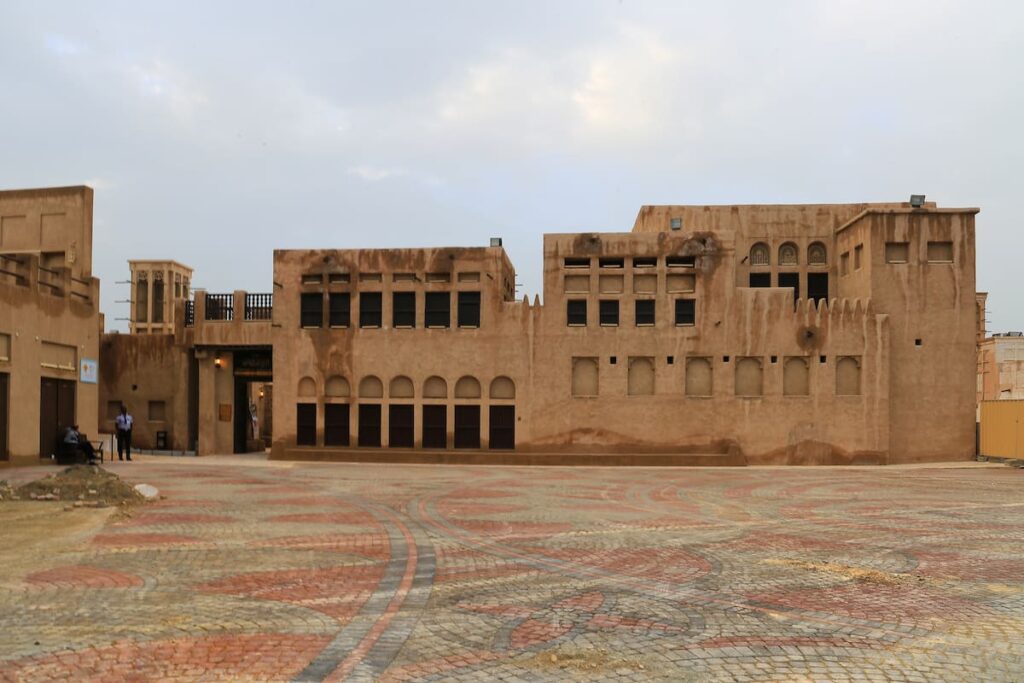
4. 🕌 Sacred Spaces: Islamic Architecture & Religious Understanding
-
Jumeirah Mosque (Open Doors. Open Minds)
The Jumeirah Mosque is one of the most globally recognized religious buildings in Dubai, besides being a personification of religious tolerance and aesthetic beauty. Constructed entirely using white stones according to the architecture of the Fatimid era, it is not just a beautiful tourist attraction in the Arab city but also the singular mosque in Dubai cultural attractions, where one can have fascinating cultural experiences as a non Muslim.
Through the campaign ‘Open Doors. Open Minds’ designed and run by the Sheikh Mohammed Centre for Cultural Understanding (SMCCU), and those who are interested in learning about Islam, Emirati values and ethics, together with religious observance, have the opportunity to do so. The practice of centuries-old question-and-answer sessions contains no limits to any questions posed during the sessions, so this is a very useful approach to quench the inquisitiveness of the people in specific places.
Upon entry, every visitor is advised to dress in a modest manner, whereby women and girls should have complete covering on their heads, arms, and feet, while men and boys must wear full-length pants with shirts that have sleeves. In case there are some people who did not read about this and came dressed in any other way, there is also traditional attire kept at the security desk to lend to such individuals.
Strictly, it is not only possible to experience the spiritual facet of Dubai in the Jumeirah Mosque. Far more together with the exploration of the religious background, dialogue of cultures is rather a pleasure than a task.
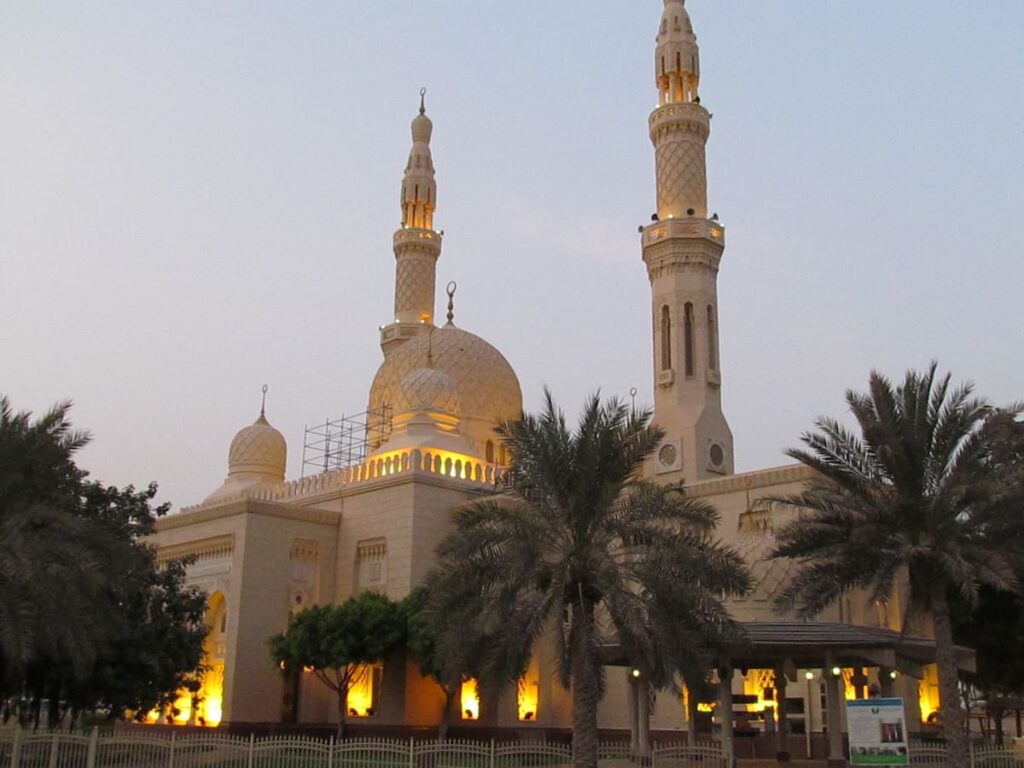
-
Other Religious Landmarks: A City of Spiritual Diversity
Even though Dubai practices many aspects of Islamic traditions, it is also a very open society with different beliefs and cultures. It is a society of individuals coming from different ethnic cultures and having different beliefs. People are not only free to practice any religion they prefer. Dubai is also home to a variety of churches, temples, gurdwara, and other places of worship, which are located everywhere in the city and suggesting that the city’s residents have religious beliefs that are different from those found elsewhere in the world.
One of the places in Bur Dubai where one may go to in order to worship is the Hindu Temple complex, which irreplaceable Roman religious Temple for thousands of souls and an amazing regular practice of the Indian Hindu religious system. Traveling a little further, Keilu and Krishna temples can be found. These are open to the public as well as worshippers.
Christians also enjoy the freedom to practice their faith, especially the ones who are members of St. Mary’s Catholic Church, Holy Trinity Church, St. Thomas Orthodox Cathedral, and other churches. During such times, the churches are charged with activity as congregations and communities from around the city pour in to attend the Sunday morning service. Among the other places of worship, the Guru Nanak Darbar Sikh Temple in Jebel Ali has also been built in this period as an expression of the community’s openness to the new faith and is renowned for its majestic structure and welcoming spirit.
The city of Dubai is such a religiously diverse place to live in that it is an awarded true believer if there be any religion, and not just a country existing on the map.
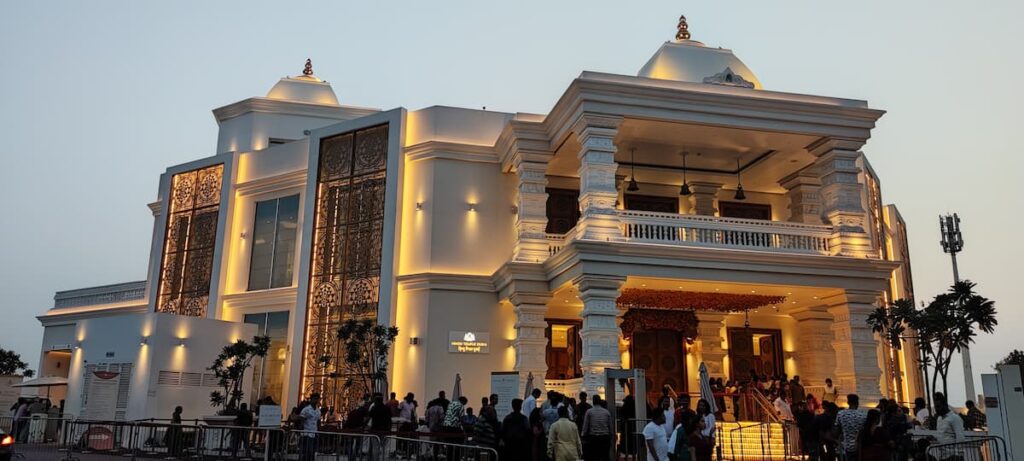
5. 🧕 Desert Roots: Traditional Emirati Lifestyle & Heritage of Dubai Cultural Attractions
-
Al Marmoom Desert Conservation Reserve
For those who are looking to experience Dubai in an unconventional and nature-friendly way, The Olive Farm, located near Dubai, provides some of the best cultural activities in Dubai. The desert that is owned by the palace occupies over ten per cent of Dubai’s total area and stands as the first unfenced desert conservation in the UAE to preserve the desert life together with the practices of the people.
Native Dessert medication for recovery? Not so much about money but more about feeling culturally connected, and these levels of tranquility can only be found in places such as the Al Marmoom conservation, which has no negative impact or cons; a real protection of local culture, nature, and the animals that lived there.
As compared to popular desert safaris available in the desert where most service providers focus on only tourist enjoyment. Safety tourism allows the travellers to be at peace as they enjoy their motherhood and being accepted in respective areas. Fry well in expressing all their happiness and cultural interests to the environment in their hearts. Here (in the desert) you can enjoy everything in high quality without the unnecessary arousal of interest with the loudly promotional cultural tourist activities: belly dancing and other shows and attractions.
If you like the real UAE without tourists and the city, then Al Marmoom unveils the cultural heritage and safeguards itself through undertakings.
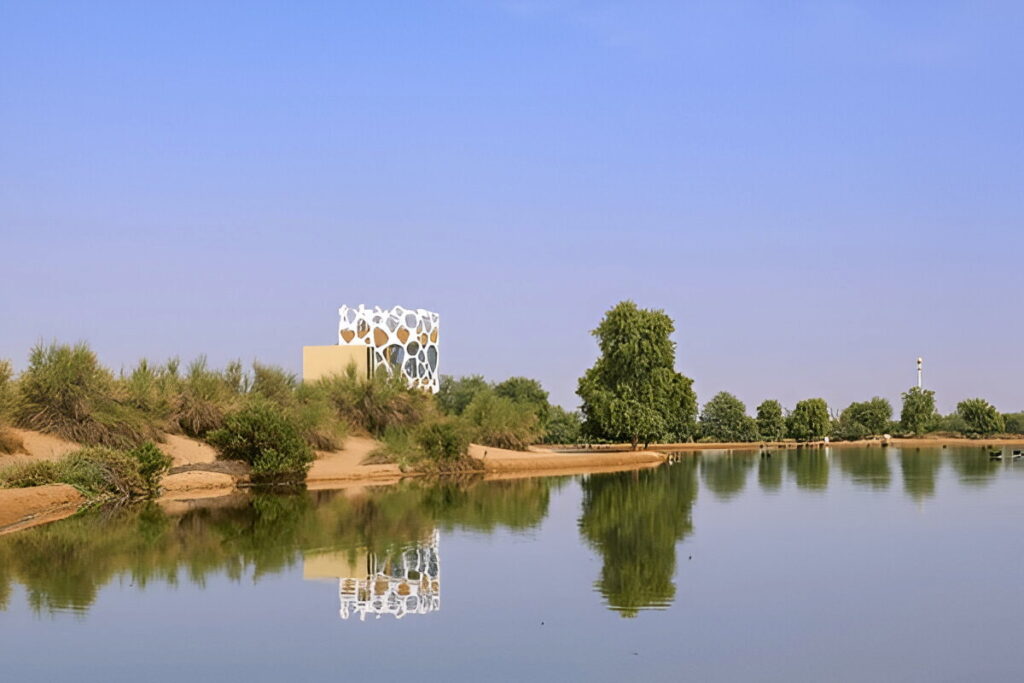
-
Desert Safari with Cultural Performances: A Night of Living Traditions
A camel ride in the evening in the Dubai desert led by a Bedouin riding a camel is a memorable experience for any visitor. However, it is much more than just a dune strolling crush; well, it also involves taking photos. Many of the accommodations within the desert now provide such entertainment where one either takes part or watches the traditional things from Old Arabic Culture.
While a cup of Arabic Coffee is served along with some dates while watching a magnificent view of the ethereal sunset over the dunes, various organized forms of activities such as riding a camel, handling and releasing a falcon, art and designs on the skin called henna are also performed. These aspects of desert activity are not just for fun; they all interlace with the deep-seated practices of hospitality and general desert life in the Arabian Gulf.
After a while, enjoy a lavish Emirati dinner in a beautiful and peaceful desert setting comprising a mix of lamb, chicken, bread, and different sweets. Both events were filled with breathtaking presentations, which include Tanura dance, a type of folk dance performed by men where every performer executes actual twirling tricks instead of pulling out fake skirts, and live music played by traditional instruments such as drums and oud, which mimics the beats of the desert.
There is a range of safari types. Nonetheless, those that put more emphasis on cultural and traditional immersion /interaction carry the day as they give an exquisite experience into the heart of Dubai’s history.
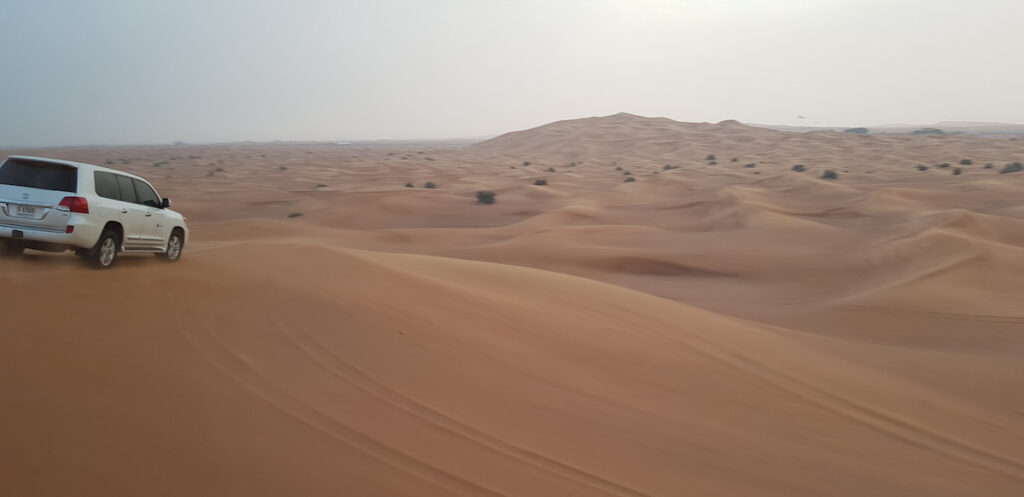
6. 🎭 Live Culture: Art, Theater, and Cultural Centers of Dubai Cultural Attractions
The cultural facet of Dubai is an expression of its past, whereas it is presented through up-to-the-minute art centers, recreation zones, and many other interactive cultural sites. These are ‘cultural zones’, so to speak, where it is evident that the fact that Dubai cultural attractions are already a country does not hamper its growth.
🎼 With that, here is Dubai Opera
Located in the heart of Downtown Dubai, Dubai Opera is an architectural triumph, designed with the primary goal of promoting Arabic and international theatre. The venue accommodates a wide variety of styles, from classical orchestral concerts and opera to ballet and, finally, to Arabic music appreciation nights, and so acts as a link between all these cultures. Aesthetically, the main building was designed with the shape of the traditional “dhow” ship of the city.
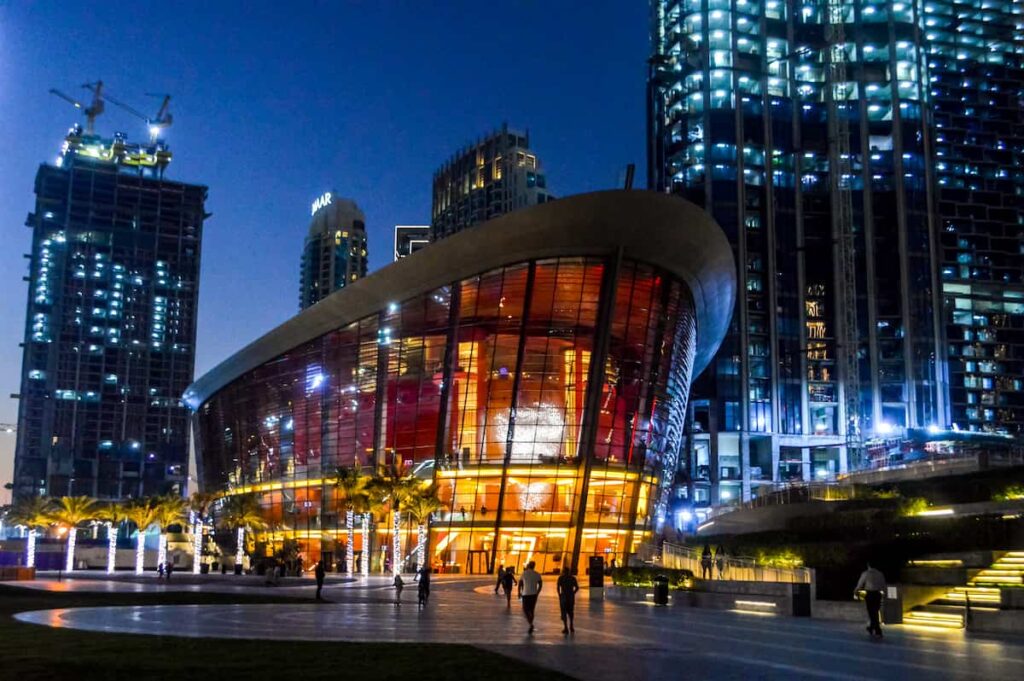
🎨 Proceed to the Alserkal Avenue Dubai cultural attractions
Found in a setting full of industrial sites in the Al Quoz area of Dubai cultural attractions, Alserkal Avenue serves as the center for creativity in Dubai, hosting numerous art galleries in the same art hub, which also houses booking galleries, independent movie halls, atelier spaces, and frequent exhibitions. This is the place where native and Middle Eastern artists are most likely to break all the boundaries by contemporary changes and developments. With neat graffiti on every wall, there are all Tenenbaum family’s mansions scattered all over the place for the artsy population, or Instagram-ful and of course, alternative tourism art collecting enthusiasts.
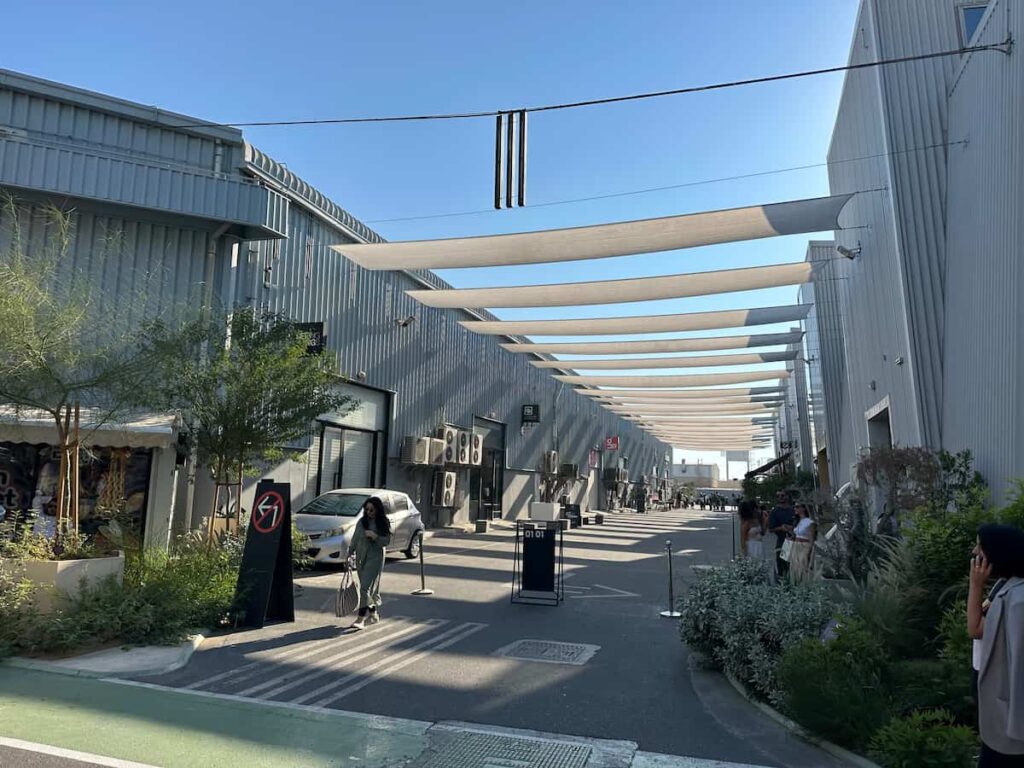
🎨 Sikka Art & Design Festival
Sikka Art Fair is held in Al Fahadi’s historical areas every spring, and it features exhibitions of contemporary art by Emirati and UAE-based practitioners in various media ranging from installations and street art to poetry, photography, and performance. This festival enlivens the heritage quarters by converting them into art chalets to make a beautiful contrast with the two.
🕌 Sheikh Mohammed Centre for Cultural Understanding (SMCCU)
If you wish to truly explore the Emirati culture and not just attend it, then SMCCU will provide touches of awe. Step into a culture meeting where you are allowed to sit on the cold floor and consume local dishes, and you can inquire about anything about their creed, who, why, or how they have those beliefs. You can ask anything that piques your curiosity. Other than that, one may engage and interact in the mosque visit on foot with a guide, have an Arabic language course, or go to Old Dubai for a heritage walk.
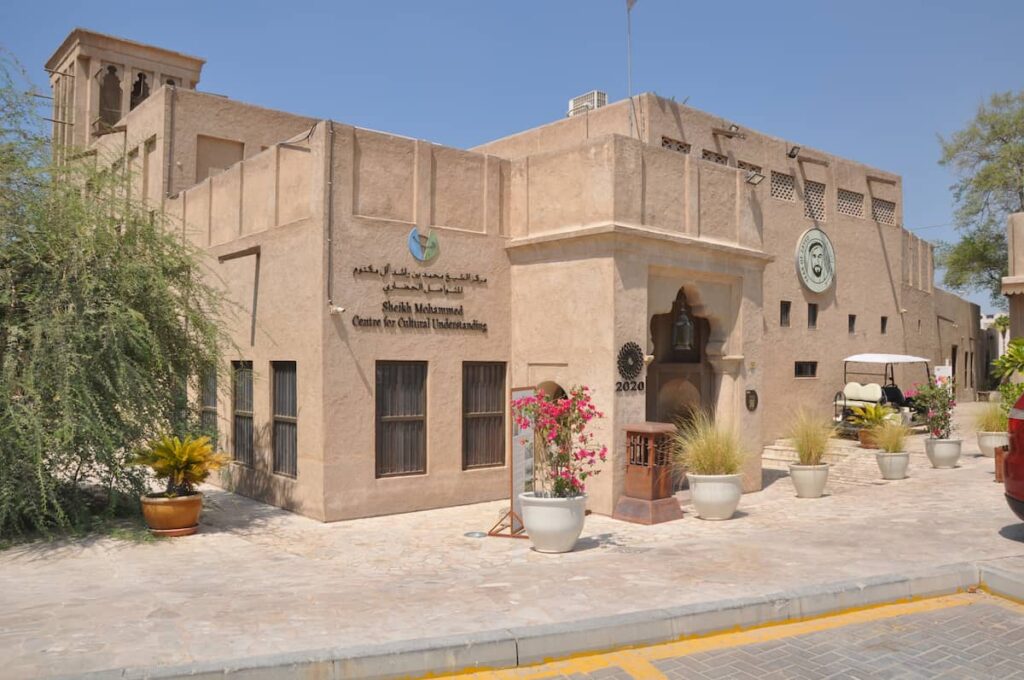
🍽️ Taste of the Emirates: Traditional Food & Hospitality of Dubai Cultural Attractions
Food in the UAE is more than just nourishment; it’s a key part of Emirati identity and hospitality. In Dubai, cultural attractions, every meal is a cultural experience, blending flavors from the desert, sea, and spice routes that once passed through the region. If you truly want to understand local life, start with the plate.
🍛 Signature Dishes & Their Meaning
-
Machboos: A spiced rice dish cooked with meat or fish, infused with dried lemon (loomi) and aromatic Emirati spices. Often served at large gatherings and weddings, it symbolizes community and abundance.
-
Harees: A comforting porridge-like dish made from wheat and slow-cooked meat. Traditionally eaten during Ramadan and special occasions, it reflects simplicity and tradition.
-
Luqaimat: Sweet, crispy dumplings drizzled with date syrup or honey. These are a must-try dessert, often served with Arabic coffee during festive gatherings.
-
Regag: A thin, crispy Emirati bread cooked on a hot griddle and often topped with cheese, egg, or fish paste. Commonly eaten for breakfast or as street snacks.
🏘️ Where to Eat Like a Local
-
Al Fanar Restaurant – A heritage-themed spot offering traditional Emirati meals in a setting that recreates old Dubai cultural attractions.
-
Arabian Tea House – Located in Al Fahidi District, it offers a tranquil courtyard and an authentic menu filled with heritage flavors.
-
SMCCU Cultural Meals – Sit on the floor in a majlis, share food with locals, and ask anything about Emirati culture during their interactive lunches or breakfasts.
☕ Cultural Rituals & Dining Etiquette
Hospitality is sacred in Emirati culture. Guests are greeted with Arabic coffee (gahwa), poured from a traditional dallah into small cups, and often accompanied by dates — a symbol of welcome and generosity.
When dining traditionally:
-
Eat with your right hand.
-
Wait for the host to begin.
-
Sharing food from large communal plates is common.
Understanding these rituals turns every meal into an opportunity to connect more deeply with the culture and people of the UAE.
🧳 Souks & Craftsmanship: Where Culture Meets Commerce
Long before Dubai became a hub of luxury brands and mega malls, its identity was built on trade, craftsmanship, and merchant culture, all of which still thrive in the city’s vibrant souks and artisanal markets.
💰 Traditional Souks: A Living Heritage of Trade
Wandering through Dubai cultural attractions, traditional souks is like stepping back in time. Each one offers not only a place to shop but also an opportunity to witness centuries-old trading customs still alive today:
-
Gold Souk (Deira) – A dazzling labyrinth of shops selling 24-karat gold, bridal sets, and intricate jewelry. Even if you’re not buying, the craftsmanship is worth admiring.
-
Spice Souk – Immerse yourself in the aromas of cardamom, saffron, frankincense, and dried lemons. It’s a sensory journey through Arabian and Indian trade routes.
-
Textile Souk (Bur Dubai) – Browse fine silks, cashmere scarves, embroidered abayas, and traditional Emirati attire.
🧵 Craftsmanship & Cultural Souvenirs
Beyond the bustling souks, Dubai’s local artisans continue to preserve the art of handmade Emirati goods, ideal for culturally meaningful souvenirs:
-
Oud (agarwood perfume) – deeply embedded in Gulf identity.
-
Incense burners, pottery, and woven baskets were made by local craftspeople.
-
Abayas and kanduras are tailored with traditional embroidery.
-
Arabic calligraphy prints or carved nameplates.
🤝 Tips for Respectful Bargaining & Shopping
-
Haggling is expected — but do it politely and with a smile.
-
Always ask before taking photos of merchants or stalls.
-
Carry cash, especially in smaller shops or markets.
-
Look for authentic UAE-made goods instead of imported imitations.
Exploring Dubai’s souks isn’t just about buying, it’s about engaging with living heritage, hearing the stories behind each item, and supporting the traditions that built the city.
✅ Cultural Etiquette & Travel Tips for Dubai Visitors
While Dubai is modern and cosmopolitan, it still deeply values its Islamic traditions and Emirati customs. Respecting these cultural norms will not only help you avoid misunderstandings, but it will also enrich your travel experience.
👗 Dress Modestly at Cultural Sites
When visiting places like mosques, museums, or traditional souks, modest attire is expected:
-
Women should cover their shoulders and knees; a scarf may be required in mosques.
-
Men should avoid sleeveless shirts and shorts in cultural or religious settings.
🤝 Public Behavior & Ramadan Etiquette
-
During Ramadan, avoid eating, drinking, or smoking in public during daylight hours out of respect.
-
Public displays of affection should be minimal — hand-holding is fine, but kissing or hugging may be considered inappropriate.
-
Swearing, rude gestures, or loud arguments can lead to legal trouble.
🕌 Local Customs & Manners
-
Remove your shoes before entering someone’s home or a mosque.
-
Use your right hand for eating, greeting, or giving and receiving items — the left hand is considered impolite.
-
Be mindful of gender norms — avoid physical contact with the opposite gender unless offered first.
Dubai welcomes visitors from all walks of life, but being culturally aware allows you to connect more deeply with locals and their heritage. A little courtesy goes a long way in making your experience smoother, more authentic, and truly memorable.
10. ❓ FAQs: What Visitors Ask About Dubai’s Cultural Side
💁♂️ Is there more to Dubai than just shopping malls and tall buildings?
Indeed, there is. While Dubai is primarily popular due to its modern, impressively designed skyscrapers, its essence is in the historical neighborhoods, local bazaars, Bedouins’ ways, and artistic performances within the mosque. In one place, one is able to do a lot, including the traditional Emirati lifestyle.
🏐 Been to Dubai, you know about the desert safari or freediving?
Yes. It is possible. People can easily engage in such outdoor activities as there are environment-friendly eco tours of the desert. Be it the Animal Park or other famous Boating Lake… On their desert tours, they can see camels, birds, watch traditional songs and dances, walk about and admire historical costumes and handicrafts, and even taste Emirati cuisine as well.
💂♂️ Next, a question from a parent: Are the cultural activities of Dubai a good fit for children?
Of course they are. Dubai Museum, Etihad Museum, and Al Seef, among other locations, are designed to attract children and to keep them engaged in the activities at the sights. Often, children’s cultural sites are rich in activities: stories, arts and crafts, and they are engaging and safe spaces for children.
📅 What is the most conducive period for exploring cultural Dubai?
The most preferred time is from November to March, as it does get rather hot there. These months will let you immerse yourself in walking around a city, attending street events, and engaging in such desert activities as rumbling through sands under a blazing sun. Moreover, a considerable number of cultural festivals fall within these dates and preserve cultural and historical event occurrences.
11. 🧭 Conclusion: The Soul of Dubai Awaits
Dubai cultural attractions are far more than a city of steel and glass towers. It embodies the rich cultural heritage of the Arabian Peninsula, offering visitors an authentic glimpse into Emirati traditions, community values, and timeless desert hospitality. From the winding alleys of Al Fahidi Historical District to the soulful call to prayer echoing from Jumeirah Mosque, from the earthy scents of frankincense and spices at the Spice Souk to the quiet, reflective silence of a starlit desert night, every moment in Dubai cultural attractions reveals a different thread in its vibrant cultural tapestry.
In today’s fast-moving digital age, it’s easy to be swept away by modern attractions. Yet, true discovery in Dubai lies in slowing down and embracing its historical layers. Whether it’s your first visit or your fifth, approaching the city with a curiosity for its past and a respect for its traditions will always lead to deeper, more meaningful experiences.
✅ Ready to Explore the Real Dubai?
🏛️ Book a cultural tour and experience the city through history, food, and local stories.
💾 Save this guide for your upcoming trip.
🔁 Share it with friends or fellow travelers seeking more than just malls.
📍 Discover our Dubai itineraries that blend famous highlights with cultural depth.

